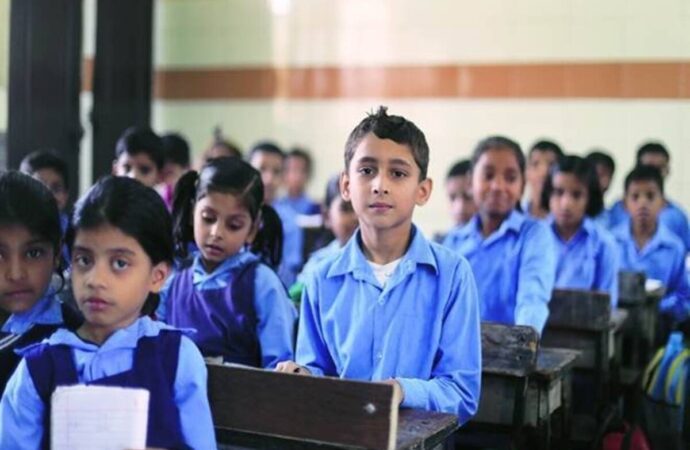– By Ankit Arora
COVID-19 has dragged the world of education to a screeching halt. With the pandemic strengthening its stronghold in our country, flattening of the curve seems like a distant possibility at the moment. This unprecedented crisis has poised an existential crisis for various sectors including education.
Earlier, UNESCO had reported in March that schools have been shut in thirteen countries nationwide, impacting 290.5 million children and teenagers who would normally attend pre-primary to upper-secondary classes. According to IBEF, India had 37.4 million students enrolled in higher education in FY19 with a Gross Enrolment Ratio of 26.3 per cent.
In India, a student base of 252 million from 1.8 million K-12 schools has been affected by an indefinite lockdown. Our education system which was already in dire need of drastic changes has hence faced immense loss owing to the pandemic. Educational institutions that had shut down in March to control the spread of the novel coronavirus now face bleak hopes of re-opening. The transition to online means of education as an alternative has turned the spotlight on to some obvious fissures that exist in our multi-layered education system.
In such a scenario, there is an immediate need to innovate and upgrade the conventional teaching-learning mechanisms. It is proven that the intervention of technology has garnered greater outreach in tier-2 and tier-3 cities. The effectiveness of technology in improving the existing pedagogy can be explored in multiple ways. One of which is augmented reality/virtual reality.
An exemplary approach to education is by the AUP AEM School in Kerala where giant planets and animals take shape in front of kindergarten students with the aid of augmented reality. Technology has hence enabled education to adapt according to the new-age learning methods. While one aspect of technology focuses on improving student-education relationship, the other centres on the training of teachers. Online education is vastly dependent on the availability of internet related infrastructure and teachers trained for the new medium.
This training is not confined just to teaching through new medium but also for adjusting the source material according to the digital platform. The National Education Association hence came up with guidelines that may help teachers to bridge this gap. Teachers and mid-level management employees of educational institutions will be at the forefront of technology adoption. Therefore, we will have to create a training module which leads to slow behavioral changes for acceptance to adapt to technology both in and outside classrooms.
Players of ed-tech arena have also made efforts to bridge the gap in teachers’ training by providing them high quality in-service training. Apps such as Teacher App and ChalkLit available on android platform have made it easier for teachers to find courses on pedagogy, subject matter expertise, and classroom management relatively easier. With no immediate method of training teachers prescribed by regulatory bodies in near future, these mobile based solutions are becoming increasingly popular among teachers to imbibe new skills.
Experts believe that these platforms will become future of teacher’s training in the coming decade. EdTEch start-ups like Vedantu, BYJU’s, and DoubtNut have capitalised on the amalgamation of education and technology by coming up with their own blended learning models. These startups encourage students to practice and learn according to their learning curves. It hence creates a healthy learning environment for students and leads to better learning outcomes.
The quick availability of instructions will help students to proactively pose any doubts that they come across about any concept. EdTech start-ups are pioneering many radical changes in the realm from A.I based content curators to virtual learning assistants. According to Markets and Markets, the Global education technology market is expected to grow from USD 43.27 billion in 2015 to USD 93.76 billion to 2020 at a CAGR of 16.72 per cent. This encourages us to embrace ed-tech as new-age means of learning.
However, this digital transformation comes with its fair share of impediments. It seems like the education of underprivileged kids has become a collateral damage of the revolution brought by ed-tech. It was estimated that there would be more than 650 million internet users by 2023 in the country. The internet penetration rate in the country still stands at around 50 percent in 2020 despite increase in number of internet users.
In addition to this, the stability of internet connection and cost incurred on data or broadband packs is another Achilles heel for equitable educational administration. The digital divide has hence become clearer more than ever now. Enabling education to all must take into account technological barriers that are present in the society. To overcome them, the first step would be to understand the complex range of issues that stem from the diversity in demographics and geography of our country. These issues may range from geographical and socio-economic constraints to unavailability of smart phones and low-network areas.
According to a parliamentary panel report, the digital literacy mission has not even met half of its target. Hence, it must be ensured that this digital transformation does not limit education for a privileged few. This change therefore has to seep to the farthest and deepest corners of India for a successful transition. Tie-ups with local tech giants to produce affordable computing devices and providing free wifi booths can be few such steps towards this change.
For lower-income communities in tier-1 or tier-2 cities, telecom operators are coming up with economical data packs which can prove to be an effective way to increase internet penetration. It is clear that the government understands that ed-tech is not a silver-bullet solution. Therefore, certain states have understood the constraints of digital access and have turned to radio and television broadcast for supporting education.
A post-COVID era in education calls for radical changes that will be heavily propelled by technology. Civil societies, educators, and administrators will have to become forerunners of this change. Further, an egalitarian model of learning that facilitates education for all sections of society is dire need of our country currently.
Equitable dissemination of education has to be facilitated by a deep analysis of the extent and scale of digital penetration. A way forward has to be paved keeping in mind the best interests of 250 million school going Indian students. Lastly, not only teaching-learning mechanisms but examination and grading procedures should be also made effective with technological interventions. Education is critical to our country’s growth and any changes implemented in it today will impact the future.
About the author: Ankit Arora is Founding Director of Saarthi Education and has represented the Indian delegation in early childhood education and ed-tech at various international conferences including Lego Ideas Conference-Denmark 2019 and Think Future Conference – South Africa 2017.


















Leave a Comment
Your email address will not be published. Required fields are marked with *